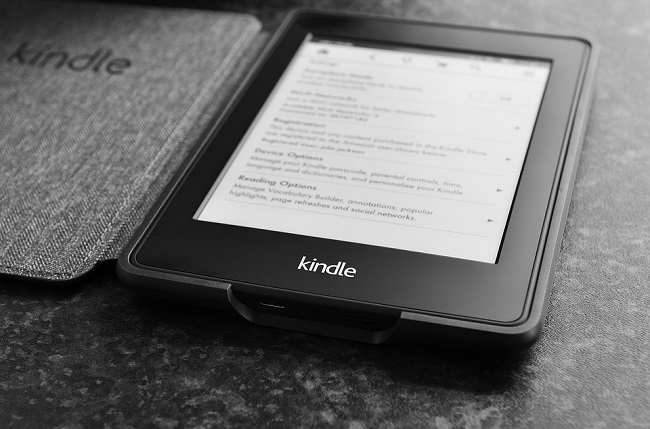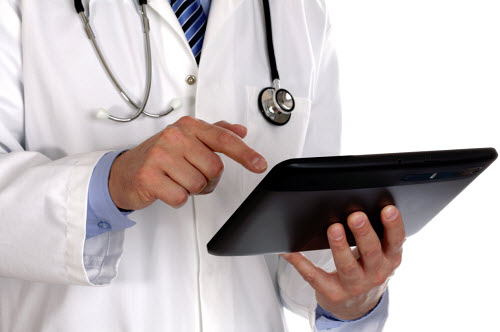The new version of the Paperwhite device has huge available storage for the graphic novels.
The new Amazon Japan Kindle Paperwhite has been unveiled and this device has a massive amount of storage. It was created this way to help readers to be able to store books with much heavier file sizes. The reason is that manga books are immensely popular there and the graphics need far more room.
The Kindle Paperwhite manga version provides users with 32 GB of storage.
This is about eight times larger than the traditional model of the Amazon Japan Kindle – and those from around the globe for that matter – which is only 4 GB. This makes it possible for readers to store several whole series of manga comics on their ereaders, said an Amazon statement. Moreover, slow page-turning rates won’t get in the way of users of this new model. That function has been sped up by 33 percent to ensure that readers stay lost in the manga world.
 Until now, the new manga Kindle had yet to be released. That said, Japanese consumers could pre-order it for only slightly more than the cost of the standard device. The pre-order price was about $157 (¥16,280). Amazon Prime subscribers can enjoy a hefty discount at about $118 (¥12,280).
Until now, the new manga Kindle had yet to be released. That said, Japanese consumers could pre-order it for only slightly more than the cost of the standard device. The pre-order price was about $157 (¥16,280). Amazon Prime subscribers can enjoy a hefty discount at about $118 (¥12,280).
The Amazon Japan Kindle manga version will start shipping today, with preorders heading out first.
This version of the Kindle e-reader will be the first one with the accelerated page turning rate. That said, the faster page turning performance will also be updated into other Kindles. Amazon expects that those improved features will become available to ereaders other than the manga-focused device by the end of October.
It is likely that the Kindle Paperwhite version for manga will remain a product exclusive to the Japanese market. The reason is that while manga does have a notable following around the globe, it doesn’t even approach the level of popularity in Japan. Moreover, the standard 4 GB devices are not small when it comes to standard books.
One ereader with 4GB can easily hold a library of up to thousands of standard books. As a result markets outside the Amazon Japan Kindle don’t have much reason to try to expand their capacity.
A recent Merck survey found that smartphones and tablets are altering the way healthcare is provided.
A new survey by Merck Manuals showed that mobile health technology is changing the game. These mobile digital resources are helping doctors and patients in the way that care is provided. The survey revealed that doctors feel confident in their ability to keep up with digital and mobile technology.
The physician participants in the survey said they were ready for the changes being made in information tech.
The main focus of healthcare has been moving toward value and efficiency. In this effort, mobile health technology has considerable potential for doctors. They feel as though they are properly equipped to keep up with this tech shift.
 The survey involved the participation of 220 physicians. It was held at a recent medical conference at which the vast majority of participants said that mobile technology such as smartphones in their offices has changed the way visits occur. This applies both in the case of their own smartphones and those brought by their patients.
The survey involved the participation of 220 physicians. It was held at a recent medical conference at which the vast majority of participants said that mobile technology such as smartphones in their offices has changed the way visits occur. This applies both in the case of their own smartphones and those brought by their patients.
More than 4 out of 5 doctors feel mobile health technology has changed the dynamic in their offices.
Among the respondents, 81 percent said that being able to obtain medical information over mobile devices has caused multiple changes in their offices. That said, physicians feel they are prepared for what is to come. They feel tech savvy enough to be able to use the devices and apply them effectively to their patient interactions.
Among those who feel prepared for the tech shift – 75 percent of the respondents – two out of three say they use mobile technology a minimum of ten times per day to access medical information. They feel this tech helps them to keep up with patient interaction needs and demands for time.
Eighty percent of the doctors who use mobile health technology devices at work use information they learn from apps and online information databases. They are using this information to provide themselves with more detailed information when making a diagnosis or recommending a patient treatment plan. Another two out of every three are keeping themselves up to date with medical news over mobile devices.
 Until now, the new manga Kindle had yet to be released. That said, Japanese consumers could pre-order it for only slightly more than the cost of the standard device. The pre-order price was about $157 (¥16,280). Amazon Prime subscribers can enjoy a hefty discount at about $118 (¥12,280).
Until now, the new manga Kindle had yet to be released. That said, Japanese consumers could pre-order it for only slightly more than the cost of the standard device. The pre-order price was about $157 (¥16,280). Amazon Prime subscribers can enjoy a hefty discount at about $118 (¥12,280).
 The survey involved the participation of 220 physicians. It was held at a recent medical conference at which the vast majority of participants said that mobile technology such as smartphones in their offices has changed the way visits occur. This applies both in the case of
The survey involved the participation of 220 physicians. It was held at a recent medical conference at which the vast majority of participants said that mobile technology such as smartphones in their offices has changed the way visits occur. This applies both in the case of 